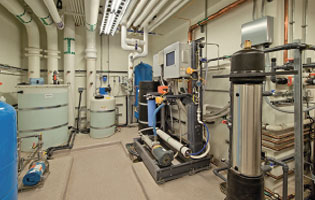PRODUCT INFORMATION
Chemical Terminology Education II
- front page
- product
- Injection treatment technology
- Technology Development Department
- Chemical Terminology Education II
Product Information
- heat treatment
-
water treatment
- Arsenic remover
- Desulfurizer
- Deaerator
- Water softener (calcium and magnesium ion removal)
- Carbon filter (removes odor and residual chlorine)
- Sand filter (removal of suspended impurities)
- Iron remover (removal of iron and manganese ions)
- RO water purifier
- Pre-backwash filter
- UV ultraviolet sterilizer
- Ion exchange resin
- reverse osmosis membrane tube
- quick filter
- Various tanks for water treatment
- Various application filter media
- 美國 Clack Clark control valve
- 美國 Fleck Control Valve
- 美國 Pentair Control Valve
- 美國 Autotrol Control Valve
- Runxin Control Valve
- Injection treatment
- Technology Development Department
-
brand
- Demo brand
- US DOW
- IDEX USA
- US CLACK
- EMERSON, USA
- American PENTAIR
- SIEMENS Germany
- American PULSAFEEDER
- Denmark DANFOSS
- Thailand HAYCARB
- France SUNTEC
- UK PUROLITE
- Japanese NOP
- Japan OLYMPIA
- Japan KATSURA
- BRAHMA, Italy
- SAGINOMIYA
- HONEYWELL
- AZBIL (YAMATAKE)
- OLTREMARE
- NIPCON
- TROCHOID
- domestic
- EGO
- KATO
- LECIP
- ATS
- JACOBI
- ETATRON
- WAVE CYBER
- BOSCHINI
- NIPPON
- WL
- CASH ACME
- YAZAKI
- RUNXIN
- About | Contact

Chemical Terminology Education II
Technical explanation
| Blowdown: | Draining is an action that describes the draining of water containing concentrated dissolved solids and replacing it with water containing low concentrations of dissolved solids. It is commonly used for boiler and cooling tower operation. It is also sometimes used as a term for the concentrated water of the reverse osmosis process. |
| Biochemical Oxygen Demand (BOD): | BOD is an empirical test for wastewater that can detect oxidizing organic organisms in water. This test is imprecise. See COD. |
| Boundary Layer: | A very thin layer of liquid, located on the surface immediately adjacent to the repelling edge of a reverse osmosis membrane, in which the concentration of dissolved solids is higher than the concentration in the water being treated. This phenomenon is called concentration polarization. |
| Brackish Water: | Water containing 1000 mg/l to 15000 mg/l dissolved solids in water is commonly referred to collectively as brackish water. |
| Saturated salt solution (Brine): | Another term for "concentrate". |
| Saturated salt plug hole (Brine Seal): | U-shaped synthetic rubber attached to the upstream end of the filter element. It forms a plug connection with the surface inside the pressure vessel of the module through the relationship of water pressure to prevent water from bypassing the module assembly. |
| Buffer: | When an acid or base is added to water, a buffer (a combination of substances) resists changes in the pH of the water. |
| Buffer Solution: | A buffer solution is a solution used to calibrate pH meters. Different formulation combinations can be used to calibrate different pH values. |
| Calcium Bicarbonate: | A salt found in most natural waters. When water containing calcium bicarbonate is concentrated or evaporated by reverse osmosis, carbon dioxide (Carbon Dioxide) will be produced and calcium carbonate (Calcium Carbonate) will be precipitated. |
| Calcium Carbonate: | In nature, it can be found from limestone. In water containing carbon dioxide, it will combine with carbon dioxide and dissolve into calcium bicarbonate (Calcium Bicarbonate). |










